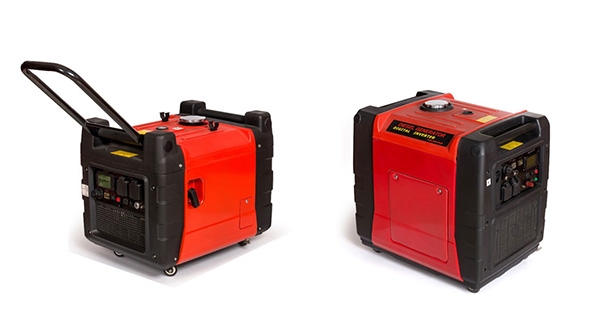The importance of learning to use the inverter generator correctly cannot be ignored. It is related to the stability and safety of the power supply and the long-term effectiveness of the equipment. When using the inverter generator, a series of steps and precautions need to be followed to ensure the safe and effective use of this equipment. The following is a detailed guide to the use of the inverter generator.
Preparation before using the inverter generator
Check the equipment: Make sure the inverter generator is in good working condition and there are no damaged or loose parts. Check whether there is enough fuel in the tank and whether the battery is fully charged.
Read the instructions: Before use, carefully read the operating instructions of the inverter generator to understand the functions, operating methods and safety precautions of the equipment.
Choose a location: Place the inverter generator in a well-ventilated, dry place away from flammable and explosive items. Make sure there is enough space around the equipment to dissipate heat and prevent accidents.
Start the equipment
Turn on the power: Make sure the power inverter generator is connected to the power supply and is in the normal standby state. If it is a gasoline or diesel generator, you need to add an appropriate amount of fuel and connect the fuel tank.
Start the generator: Start the portable inverter generator according to the instructions in the manual. This is usually achieved by pressing the start button or pulling the start rope. After starting, observe whether the generator is running normally and pay attention to any abnormal noise or vibration.
Connect the load
Confirm the load: Before connecting the load, confirm that the connected load is within the rated power range of the inverter generator to avoid overloading, damage to the equipment or fire, and other safety issues.
Select the socket: The inverter generator usually has multiple AC output sockets. Select one or more of them for connection as needed, and make sure that the selected socket matches the plug of the load.
Connect the load: Use the correct power cord to connect the load to the corresponding socket of the inverter generator, and ensure that the connection is firm and there is no exposed wire part.
Adjustment settings
Output voltage: If necessary, the output voltage of the power inverter generator can be adjusted according to the requirements of the load equipment. Before adjustment, make sure that the home generator is turned off and disconnected from the power supply equipment. The required voltage setting is achieved by rotating the voltage adjustment switch.
Other settings: Depending on the specific model and function of the inverter generator, other settings may also be required, such as adjusting the frequency phase. These settings should also be made when the equipment is turned off and disconnected from the power supply.
Use process
Observe the operation: During the operation of the inverter generator, regularly observe the operation of the equipment. Pay attention to abnormal conditions such as abnormal noise, vibration or flashing indicator lights.
Monitor the load: Make sure the connected load does not exceed the rated power range of the inverter generator. If the load is too large, reduce the load or increase the generator capacity in time.
Safe use of electricity: During use, follow the principle of safe use of electricity. Do not place the inverter generator in a humid or flammable environment to avoid dangerous situations such as electric shock or fire.
Stop using
Turn off the load: Before stopping the inverter generator, turn off all connected load devices and disconnect their power plugs.
Turn off the generator: Turn off the generator according to the instructions in the manual. Usually, it is achieved by pressing the stop button or pulling the stop rope. After turning off the generator, wait for a while for the equipment to cool down before proceeding.
Maintenance and care
Clean the equipment: Clean the appearance and internal parts of the inverter generator regularly, use a clean cloth or brush to remove dust and dirt, and keep the equipment well-ventilated.
Check the connection: Check the connection of wires and sockets regularly to ensure that all connections are firm and reliable and there are no loose or damaged parts.
Replace parts: If any damaged or failed parts (such as filters, spark plugs, etc.) are found, they should be replaced in time to ensure the normal operation of the equipment.
